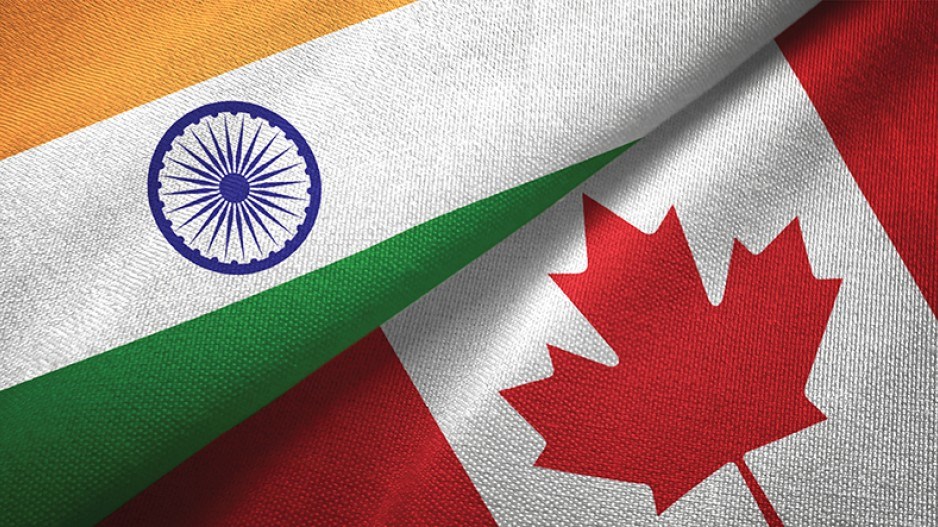While opinions on Canada’s long-awaited Indo-Pacific Strategy – released earlier this week - are mixed, one former diplomat said the commitment to focus more on the region is ultimately good news.
Omar Allam, managing director and leader of Deloitte’s global trade and investment practice, previously served as a Canadian trade diplomat in India. To him, the Strategy’s heavy emphasis on strengthening economic ties with allies and partners is a strong indication to other countries like India that Canada will be more active in their engagement in Asia.
“As a former senior trade diplomat in South India, this excites me,” Allam said of the Strategy, which had been anticipated for years by observers. “It excites me because there’s a commitment that now signals to New Delhi that Canada is committed for the long-term beyond the strength of the relationship that we have – that we are committed to re-investing in a longer-term relationship with one of the largest economies in the world.
“It’s a great signal to say, ‘We are putting our money where our mouth is,’” he added. “The key now is execution.”
The wide-ranging Indo-Pacific Strategy, split into four sections, contained various policy directives and positions. But the most salient changes made to Canada’s previous position on Asia involve China, Canada’s second-largest trade partner with whom the federal government had pursued close ties under Prime Minister Justin Trudeau.
That position, however, is changed dramatically in the new Strategy, with the document describing China as “increasingly disruptive” on the global stage against liberal democracies in terms of bending rules and regulations. The Strategy’s biggest financial commitment was a half-billion figure given towards military/intelligence co-operation with other allies, along with repeated emphasis that Canada will be vocal about its values to the point of challenging Beijing “in areas of profound disagreement.”
Allam noted, however, that the strategy also recognized that China has grown so big and influential that Canada and other Western countries must engage Beijing on topics such as climate change. In that sense, he said that Canada is correct in outlining areas where cooperation is beneficial to both sides – as well as recognizing the realities of a more belligerent China on the world stage.
“The reality is, Canada has got to forge ahead and advance our own interests, like in areas where we’ve got to advance our common interest [with countries like China],” he said. “... But it also requires us to re-think how we protect our national security interests. And that starts at home with domestic investments into sectors like critical minerals, cyber-security and renewable energy.”
This is where India may play a bigger role moving forward. The Strategy divided the Indo-Pacific into four main players: China, India, the “North Pacific” (Japan and South Korea) and Southeast Asia. But the Canadian bilateral trade numbers for 2011 with the three other players ($114 billion with China, $47 billion with Japan/South Korea, and $32 billion with ASEAN) dwarve the current trade figures with India ($4.6 billion in imports and $3 billion in exports).
The Indo-Pacific Strategy recognizes the potential for growth, proposing talks that would inch eventually towards a comprehensive economic partnership agreement. In the meantime, Canada said it will bolster visa-processing in India and support people-to-people exchanges to boost the number of Indian students in Canada from 650,000 figure from 2012 to 2021.
“India’s strategic importance and leadership—both across the region and globally—will only increase as India—the world’s biggest democracy—becomes the most populous country in the world and continues to grow its economy,” the Strategy said. “Canada will seek new opportunities to partner and engage in dialogue in areas of common interest and values, including security, and the promotion of democracy, pluralism and human rights.”
Allam said these are all valuable first steps towards India. Canada’s last major outreach – Trudeau’s 2018 visit to India – was controversial and featured minimal contact between the Canadian prime minister and the Indian leadership under prime minister Narendra Modi.
“Have we capitalized on opportunities and seized them fully in the Indian market? No,” Allam said. “Is there potential to grow, build and leverage our strong people-to-people, immigration, business and academic ties? Absolutely. It’s a signal of confidence to the Canadian business community... We have Indian investments flowing into Canada, and we can expand and grow based on platforms we have already developed.”
He added that the Indo-Pacific Strategy’s lack of detailed initiatives, funding and other operational processes does not concern him, because it is now up to Canada’s private sector to engage with the federal government to see what opportunities are available in the Indo-Pacific going forward. Allam also noted it would not hurt for Canada to develop similar comprehensive strategies to outline how Canadian businesses can go after other markets around the world.
“Trade is the new foreign policy,” Allam said of his ultimate takeaway from the Strategy. “And right now, for Canada, for the private sector, government, academia and science-based organizations, this needs to be the priority moving forward if we are going to be successful in implementing strategies like this.”




